Freezer-friendly meals and freezing tips
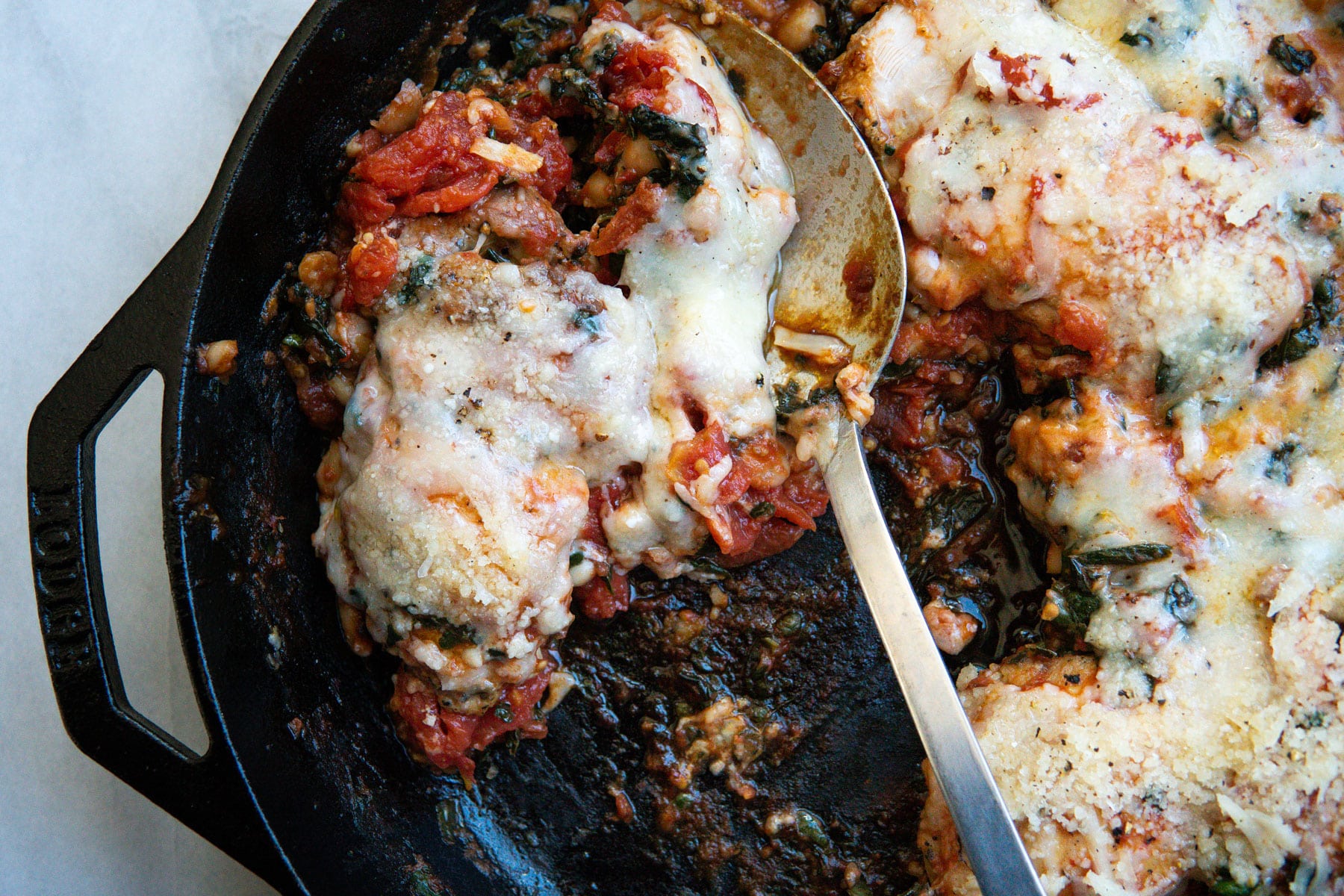
I get a lot of questions in our Q&A about what foods and meals freeze well and my answer is usually this: the best things to freeze are components for meals (cooked grains, cooked proteins, sauces), any soup or stew, baked goods (muffins, pancakes, breads, cakes), and most skillet, one-pot, or sheet pan meals. Honestly, […]
I get a lot of questions in our Q&A about what foods and meals freeze well and my answer is usually this: the best things to freeze are components for meals (cooked grains, cooked proteins, sauces), any soup or stew, baked goods (muffins, pancakes, breads, cakes), and most skillet, one-pot, or sheet pan meals.
Honestly, I freeze almost everything that I know I won’t be able to finish (or that I’m sick of eating and will eat at a later date!). In general, most things that are cooked can be frozen.
To make things easier for you, I put together a list of Cooking Club recipes that would freeze well, organized by category. Use it as a reference for when you want to stock up your freezer in the future!
At the end of the blog, you’ll also get my top tips for freezing and thawing food.
Freeze-able sauces
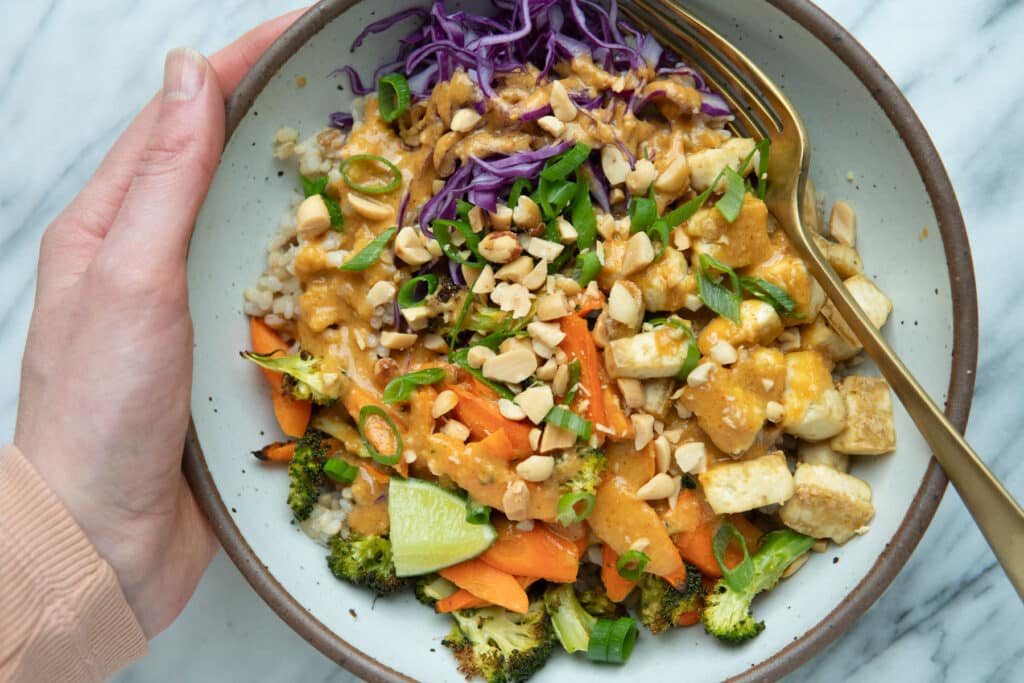
You’ll hear me say many times, having a sauce, cooked grain, and cooked protein in the freezer will save you on your busiest nights. Below are some favorite sauces that freeze well and will make anything in a bowl taste 100x better.
- Spicy Curry Peanut Sauce
- Romesco Sauce
- Pumpkin Seed Chimichurri
- Cilantro Feta Lime Sauce
- Miso Ginger Dressing
- Sesame Ginger Sauce
- Cilantro Jalapeno Sauce
- Creamy Cilantro Ginger Dressing
- Basic Pesto
- Pesto Dressing
Meat and rice bowls
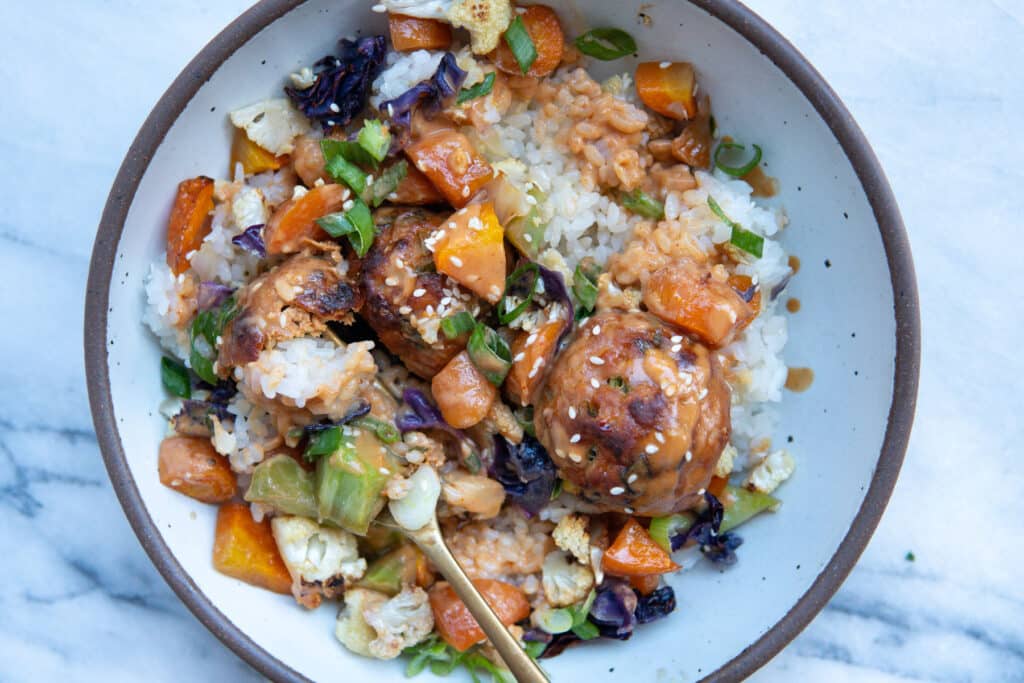
Two things that freeze well are cooked rice and meat, so pretty much any meat and rice bowl can easily be frozen. Just make sure you freeze the rice and meat separately.
- Thai Curry Chicken and Rice Bowls
- Curry Peanut Chicken Bowls
- Sesame Chicken Meatball Bowls
- Instant Pot Turkey Lentil Curry
- Chinese-Style Beef + Broccoli Rice Bowls
- Peanut Ginger Tomato Curry
One-pot dinners
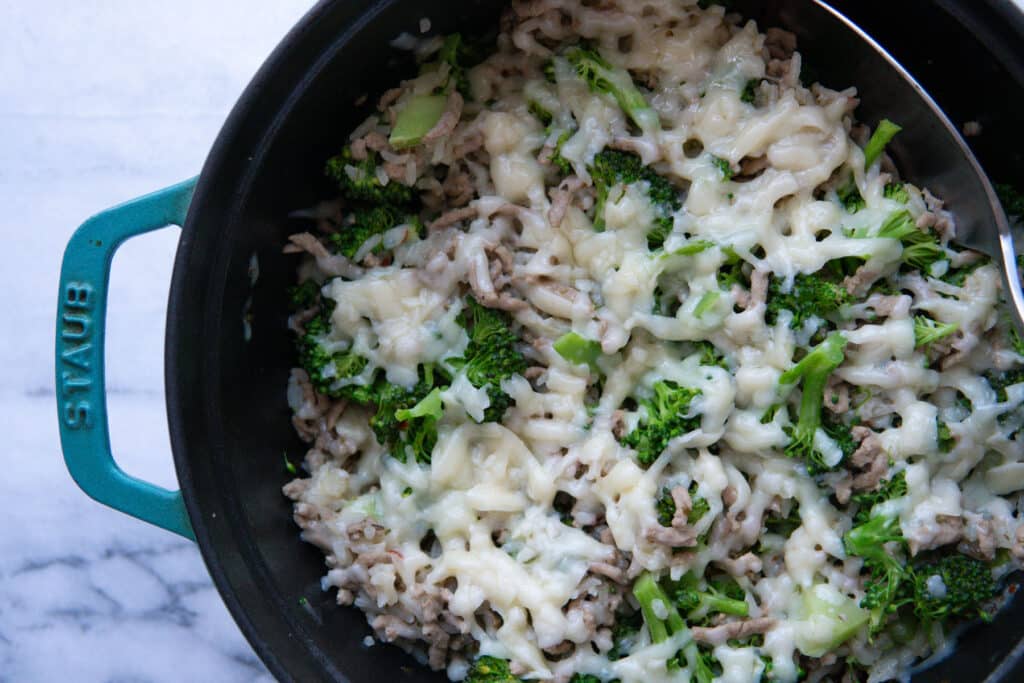
Most “one-pot” meals are made from ingredients that freeze well – grains, beans, meat, cooked veggies, etc…Below are some favorites!
- One Pot Cheesy Turkey + Broccoli Rice
- Chipotle Chili
- Instant Pot Curried Lentils and Rice with Lemony Yogurt
- Instant Pot White Chicken Quinoa Chili
- One Pot Ginger Chicken and Rice
- Instant Pot Hamburger Helper
- Puerto Rican Style Rice and Beans
- Arroz con Gandules (Puerto Rican Rice with Pigeon Peas)
Skillet meals
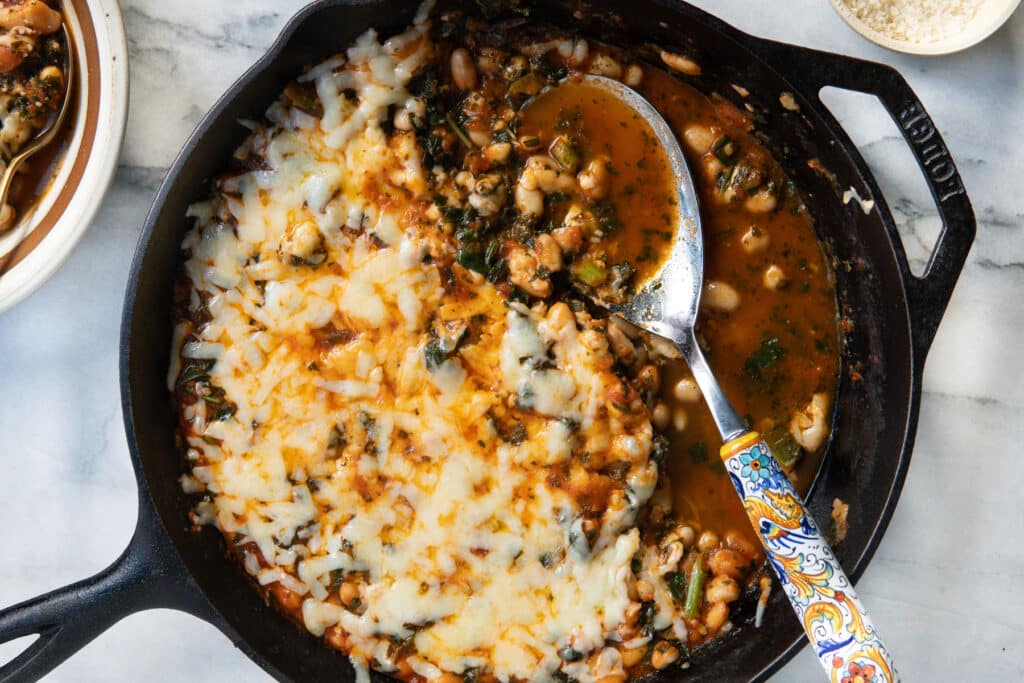
Most skillet recipes can be frozen because (again) they usually consist of cooked veggies, meats, and grains (similar to one-pot meals). Below are a few favorites!
- Skillet Enchiladas
- Skillet Pizza Beans and Greens
- Skillet Chicken Beans and Greens with Tomatoes
- Turkey Apple Sage Fried Rice
- Cheesy Kimchi Beef and Veggie Bowls
- Skillet Sausage Lasagna Bake
- Chicken Sweet Potato Kale Skillet
Burritos/quesadillas/other
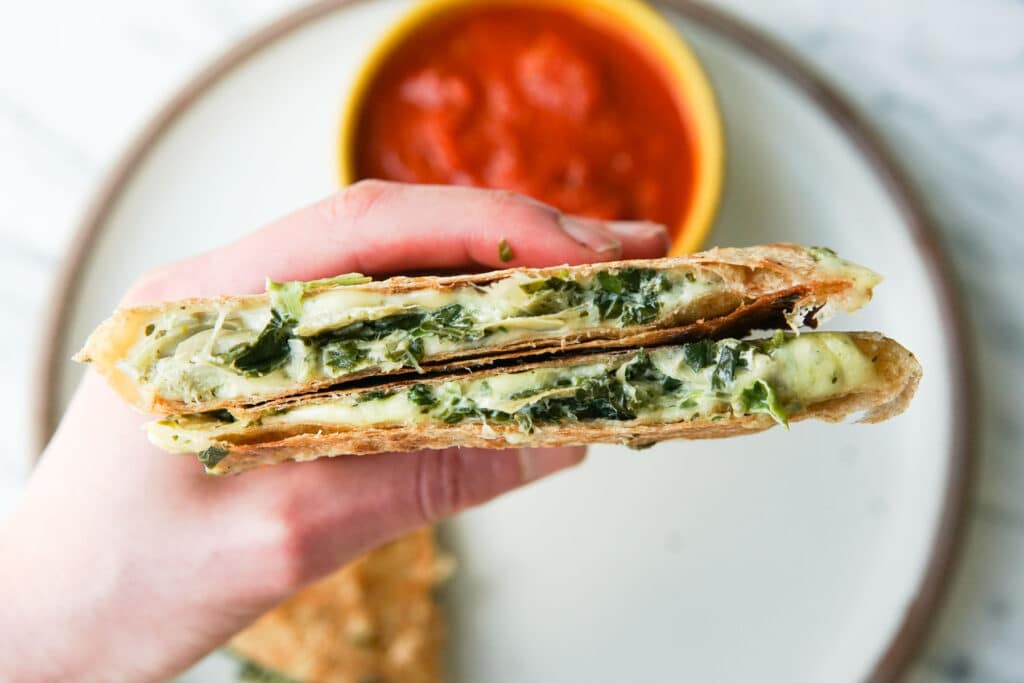
Tortillas freeze well, so put any cooked protein and veg in a tortilla with some cheese and freeze! Simply reheat and serve with sauces (guac, salsa, yogurt, etc…).
- Zucchini Corn Quesadillas with Cilantro Lime Yogurt
- Spinach Artichoke Quesadillas with Marinara
- Sweet Potato Black Bean Burritos with Taco Sauce
- Curried Turkey Stuffed Delicata Squash
Cooked meats
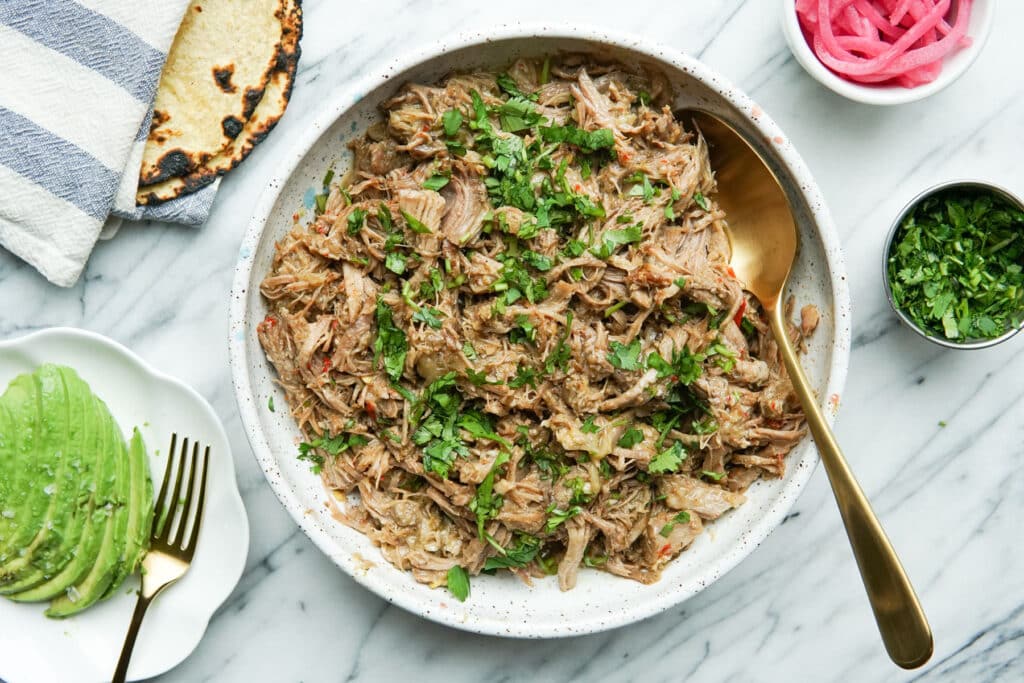
Protein is usually where people get stuck when they have to throw a quick meal together, which is why it is SO helpful to have cooked protein prepped in the fridge or freezer. Below are some great options or you can just simply cook ground meat or make little meat patties/balls.
- Instant Pot Shredded Beef
- Stovetop Taco Chicken (with Cilantro Lime Sauce)
- Instant Pot Shredded Chicken
- Instant Pot Carnitas Tacos
Baked goods
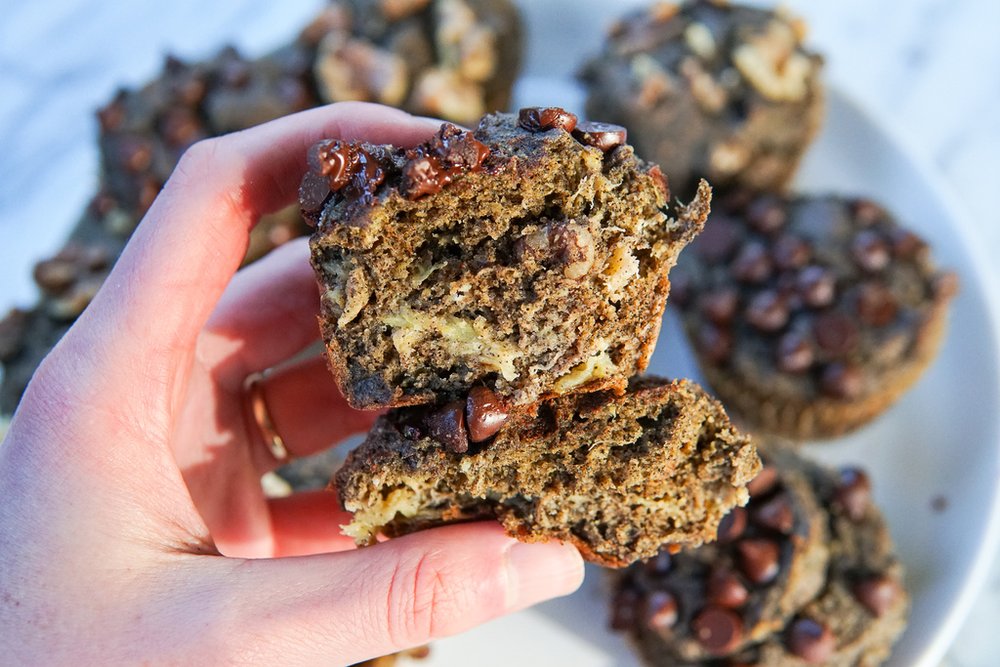
Muffins, cakes, waffles/pancakes, bars, and breads all freeze beautifully.
- Olive Oil Cake
- Cheddar Spinach Breakfast Bars
- Buckwheat Banana Muffins
- Whole Grain Greek Yogurt Waffles
My top tips for freezing foods
- Let your food cool completely before freezing so that it doesn’t change the temperature of your freezer and put other foods in the “danger zone”. So let it cool off at room temp, then the best practice is to chill it in the fridge (before freezing), but you can also just put it in the freezer at that point.
- Always LABEL the food with what it is, the quantity, and the date you froze it. If you don’t do this, you’ll forget what things are and they’ll stay in there until your next annual freezer clean out.
- Store food in the proper size and type of container. Think about how you’ll use it again and what container size and shape would make it easiest to defrost or reuse. It’s best to freeze things in smaller portions.
- Are you really going to need 3 cups of pesto for one meal? It might be a better idea to divide it into 4 smaller single use containers rather than one big one. It will thaw more easily AND it’s the right portion for what you’ll use it for.
- Same goes with freezing casseroles or things like lasagna – cut it up and freeze it in small portions rather than one big hunk that will take forever to thaw and reheat.
- I like to freeze cooked protein and grains (like shredded chicken) in my Stasher bags (or any zip top bag) because you can press it out into a thin layer, which means it will thaw much faster.
- To reduce freezer burn, remove as much air as possible from whatever you’re freezing. This is particularly applicable when freezing things in zip top bags.
- Keep a big zip top bag in the freezer to throw veggie scraps or meat bones into to use for broth once that bag is full. You’ll thank yourself when you start to feel a cold come on!
- If you have a bunch of veggies that are about to go bad, cook them first (raw veggies do not freeze well), then throw them in the freezer. You can add it to soups, stir-fries, smoothies, etc…I do this with all my veggies when I’m about to go on a long trip.
Foods that don’t freeze well
Below is a general list of foods you should avoid freezing because it will greatly degrade the texture.
- Raw vegetables
- Cooked pastas
- Cooked fish
- Recipes with cream or milk base
The best way to defrost foods
How you freeze your food will play a big role in how easy that food is to defrost. This is why you should always freeze in smaller portions, if possible.
If you can think far enough ahead, it is always best to defrost food first in the fridge, placing whatever it is in the fridge a night or two before you want to use it.
Then the next day, it’s ready to be cooked or heated up.
Using the microwave
To thaw food in the microwave, microwave at a low power mode, checking on the food every 30-60 seconds and breaking/mixing it up when possible to help it thaw out evenly.
You can also just use the microwave as a jumpstart to thaw something, then transfer it to a skillet or pot on your stove to finish it off.
Using the stovetop
When thawing in a skillet or pot, cover it with a lid, which will trap steam and create a hotter/moist environment. You can also add a splash of water to add moisture and steam if you’re worried about the food drying out or burning.
How to thaw meat
Best practice is to place the meat in the fridge a day or two in advance.
If you don’t think that far ahead, never ever frantically try to defrost it with hot water. This can alter the texture of the proteins and put it at an unsafe temperature that can promote the growth of bacteria.
The best way to defrost meat (or seafood) is to submerge the meat, which should be in some kind of airtight container or bag, into a bowl full of cold water and replace that water every 30 minutes to make sure it stays at a safe temperature.
The time it takes to thaw depends on the thickness and size of what you’re defrosting. In general, a one pound portion of meat can usually thaw in an hour when you use this method.
If you’re really in a pinch and need meat thawed fast, you can turn to your microwave as a last resort (following my microwaving tips above). You’re likely going to end up with the bottom and sides of your meat cooking while the inside is still frozen.


leave your comments!